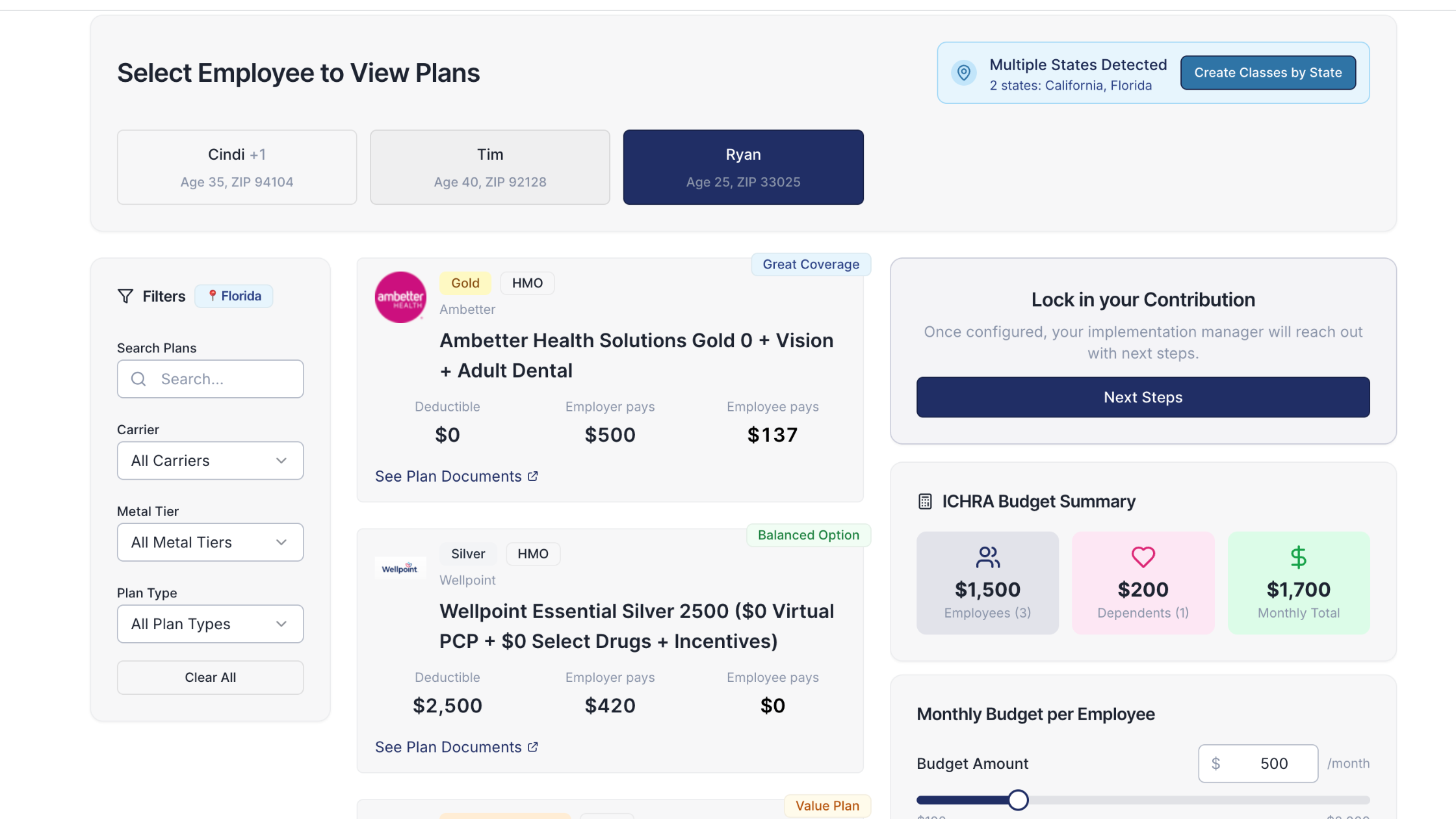How Much Does an Urgent Care Visit Really Cost? A 2025 Guide

Urgent care centers are now a fundamental part of the U.S. healthcare system, offering fast, convenient, and cost-effective care for non-life-threatening conditions. For benefits brokers, HR leaders, and executives managing employee health plans, understanding the true cost of urgent care in 2025 is crucial for building benefits strategies that balance access, value, and cost control. Understanding how much does urgent care cost is crucial for patients and employers alike. This guide breaks down the urgent care visit cost, compares it to emergency room (ER) expenses, and provides actionable insights for employers and employees.
The Rise of Urgent Care: A Modern Healthcare Solution
Urgent care centers fill the gap between primary care and the ER. They’re ideal for treating conditions like minor injuries, infections, and sudden illnesses that require prompt attention but aren’t severe enough for emergency care. Their popularity continues to rise due to:
- Shorter wait times (often under 30 minutes)
- Lower costs compared to ER visits
- Extended hours and walk-in availability
- Wide range of services: from X-rays to lab tests
What Does an Urgent Care Visit Cost in 2025?
The cost of an urgent care visit varies by location, services provided, and whether you have insurance. This section details the urgent care visit cost with and without insurance. Here’s a breakdown of what you can expect:
Average Urgent Care Prices
- Without Insurance: When considering how much is an urgent care visit, the national average ranges from $150–$280 per visit. Depending on the complexity of the visit and the region, the cost can range from $100–$450. A basic office visit is typically $100–$150, while additional services like X-rays, stitches, or lab tests can add $20–$300+ to the bill.
- With Insurance: Knowing how much is urgent care with insurance helps in planning for medical expenses. Most insured patients will pay a copay between $20 and $75. If the deductible has not been met, the cost is typically between $65–$185, though you may be responsible for the full negotiated rate.
By Region (Sample Averages):
Costs are often higher in large metro areas, averaging $200–$280.
- Boston: $290
- Chicago: $220
- Dallas: $365
- Miami: $565
- New York: $410
- Los Angeles: $265
Service-Specific Costs
Urgent Care vs. ER: The Cost and Care Comparison
The difference in cost between urgent care and the ER is significant. Here’s how they compare:
Key Insight: Urgent care is 5–10 times less expensive than the ER for non-life-threatening conditions, making it a smart choice for employers and employees looking to control healthcare spending.
What Drives the Cost of Urgent Care?
Several factors influence the final bill:
- Type of treatment: Simple visits cost less than complex procedures.
- Location: Urban and high-cost-of-living areas tend to be pricier.
- Facility fees: Some centers bundle services; others bill separately.
- Insurance coverage: Your deductible, copay, and network status matter.
- Additional services: Lab tests, imaging, and procedures add to the total.
Insurance and Out-of-Pocket Costs
How Insurance Impacts Urgent Care Cost
- Copays: Most plans require a fixed copay ($20–$75) for urgent care.
- Deductibles: If you haven’t met your deductible, you may pay more out-of-pocket.
- Coinsurance: After meeting your deductible, you might pay a percentage (10–30%) of the visit cost.
- Network status: In-network centers are cheaper; out-of-network may not be covered or will cost more.
Out-of-Pocket for the Uninsured
- The average visit costs $150–$280, but can reach $450+ for complex care.
- Some centers have tiered pricing based on visit complexity, ranging from $100 to $400+.
- Some clinics offer payment plans or sliding-scale fees.
The 2025 Trends: Accessibility, Innovation, and Transparency
Urgent care is more accessible and innovative than ever:
- Telehealth: Many centers offer virtual urgent care for minor conditions, often at lower costs.
- Community initiatives: Sliding-scale fees, mobile clinics, and extended hours increase access.
- Transparent pricing: More centers now post prices online or provide upfront estimates.
- Integration with ICHRA: Employers leveraging Individual Coverage Health Reimbursement Arrangements (ICHRA) can reimburse employees for urgent care visits, offering flexibility and savings.
When to Choose Urgent Care vs. the ER
Urgent Care is best for:
- Minor injuries (sprains, small cuts, minor burns)
- Cold, flu, fever, sore throat, cough
- Mild asthma attacks
- Urinary tract infections
- Earaches, sinus infections
- X-rays for minor fractures
Emergency Room is necessary for:
- Chest pain or trouble breathing
- Severe bleeding or trauma
- Signs of stroke (sudden weakness, confusion)
- Severe allergic reactions (anaphylaxis)
- Loss of consciousness, seizures
- Major fractures or head injuries
Key Takeaways
- Urgent care is a cost-effective, accessible alternative to the ER for non-life-threatening conditions.
- Average urgent care prices in 2025 are $150–$280 without insurance; copays with insurance are $20–$75.
- ER visits for similar issues cost 5–10 times more.
- Employers can leverage ICHRA and educational initiatives to help employees save on urgent care costs.
- Transparency, flexibility, and integration are essential for modern benefits strategies.
You got questions, we got answers!
We're here to help you make informed decisions on health insurance for you and your family. Check out our FAQs or contact us if you have any additional questions.
The average urgent care visit in 2025 costs between $150 and $280 without insurance. With insurance, most people pay a copay of $20–$75, or $65–$185 after meeting their deductible.
Urgent care is significantly less expensive. A typical urgent care visit costs $150–$280, while an emergency room visit averages $1,500–$3,000 or more for the same non-life-threatening issue.
Yes, most health insurance plans cover urgent care visits. You’ll usually pay a copay ($20–$75) or a portion of the cost if you haven’t met your deductible. Always check if the center is in-network for the lowest cost.
A basic urgent care fee covers the exam and treatment for minor illnesses or injuries. Additional services like X-rays, lab tests, or procedures (e.g., stitches) may cost extra—typically $20–$300+ depending on the service.
Yes, you can use a Health Savings Account (HSA), Flexible Spending Account (FSA), or funds from an Individual Coverage Health Reimbursement Arrangement (ICHRA) to pay for urgent care visits and related out-of-pocket expenses.
Explore more related content
What is Venteur
Explore the best human-first Health Insurance platform
Simple, personalized health benefits
Sign up in minutes, define your contribution, and let your employees choose the health plan that works right for them
Integrations to make everything run smoothly
We'll connect with your payroll and finance systems to make deductions and premium payments seamless
Easy onboarding and off-boarding
In just a few clicks, add your roster and make updates on the fly. We'll handle it from there.
Venteur Certified Brokers to help your employees pick the right plan
Our trusted brokers ensure the best outcomes for employees and employers by unlocking health savings and providing unrivaled plan options.
AI-powered plan recommendations to give you confidence while you shop
Backed by 30 years of healthcare data, Venteur’s AI helps employees compare and choose the best plan for their unique situation.
Compliance and reporting because no-duh!
Venteur manages plan administration, reporting, and compliance so you can focus on growing your business.


